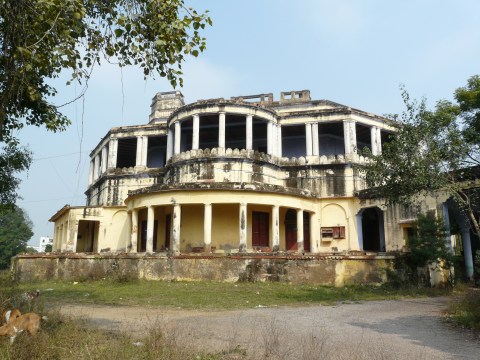During a trip to the Bahraich area of UP in 2010 I passed through this small town called Nanpara, which had a few jems of “desi deco” architecture, desi deco being the umbrella term I’m using for buildings (mostly small residential and commercial) built in the mid-20th c throughout India that use and appropriate art deco elements and motifs in various creative (and often kitschy) ways. One finds such buildings in all kinds of unexpected places, including small towns and larger villages, and it’s always a treat to come across them. Continue reading










